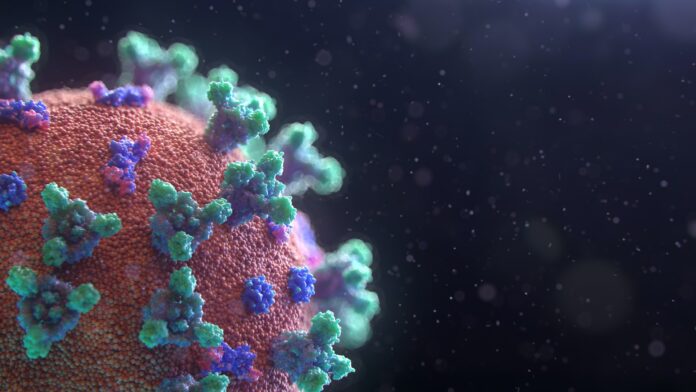Both have similar symptoms—but potentially different outcomes.
If you’ve ever come down with a summer cold, you know the struggle of having to trade your swimsuit and sunblock for tissues and cough syrup. Now, almost a year and a half into a global pandemic, the fact that viruses don’t discriminate against seasons has become even more clear. With COVID cases rising again across the US and even vaccinated Americans coming down with breakthrough infections of the more worrisome Delta variant, anyone experiencing symptoms like a runny nose or body aches will wonder if they’re battling a cold or SARS-CoV-2.
“People are developing upper respiratory infections that are not COVID, and because these common cold viruses cause very similar symptoms to COVID—particularly the mild cases of COVID—there’s a lot of confusion,” infectious disease expert Amesh A. Adalja, MD, senior scholar at the Johns Hopkins Center for Health Security, tells Health.
Here’s, what you need to know about summer colds, how symptoms compare to those of COVID-19, and what experts recommend doing if you get sick.
Why colds happen in summer
It’s true that viruses like the common cold and flu tend to strike more in the winter, Natasha Bhuyan, MD, One Medical provider and clinical assistant professor of Family, Community and Preventive Medicine at the University of Arizona College of Medicine in Phoenix, tells Health. The jury is still out on exactly why this is the case, but cold, dry air may make it easier for viruses to spread to the respiratory tract. Also, people spend more time indoors in cold weather, where viral transmission is more likely than outdoors.
Another reason for summer colds this year has to do with decreased COVID protocols. Wearing masks and socially distancing prevented people from catching the common cold. But this summer’s been a different story. “As we had very aggressive social distancing for an extended period of time, there was just not an opportunity for many of the viruses that cause common colds to infect people,” says Dr. Adalja. “However, as people have started to socially interact again, we’re starting to see those viruses start to kick up.”
Summer cold vs. COVID-19 symptoms
According to the Centers for Disease Control and Prevention (CDC), common cold symptoms usually include:
- Sore throat
- Runny nose
- Coughing
- Sneezing
- Headaches
- Body aches
By comparison, COVID-19’s main symptoms include a fever or chills and shortness of breath, according to the CDC. The Delta variant—which currently accounts for more than 80% of cases in the US—has additional signs to know about.
“The symptoms of the Delta variant are different from the original coronavirus strain,” explains Dr. Bhuyan. “With the original strain, people usually had a cough, fever, and shortness of breath. With the Delta variant, people can present nasal congestion, headache, sore throat or even a stomachache. Many of these symptoms are similar to a cold, allergies, or sinus infection.”
Even the loss of taste and smell, which was once thought to be a distinctive symptom of COVID-19, can’t be attributed to the novel coronavirus exclusively. “Loss of taste or smell may be something that COVID-19 is able to do with a greater degree of frequency and severity, but it is not unheard of to see it happen in certain cases of other respiratory viruses, if there is significant nasal congestion,” says Dr. Adalja.
Summer cold or COVID-19: How to know
That said, Dr. Adalja notes there is no way a person can easily distinguish COVID-19 from other upper respiratory tract infections. “They all have overlapping symptoms, so there’s nothing specific that you could say definitively ‘this is not COVID-19,'” he says.
Still, it bears mentioning that a breakthrough COVID infection is rare for people who are fully vaccinated, says Dr. Adalja. “The first thing I would think about is other respiratory viruses,” he notes. “The probability of [an upper respiratory infection] being COVID when you’re fully vaccinated goes down.”
What to do if you’re experiencing symptoms
Given just how similar the symptoms caused by the Delta variant of SARS-CoV-2 can be to a summer cold, the only reliable way to differentiate between the two is to get tested for COVID-19 to rule it out, advises Dr. Adalja and Dr. Bhuvan.
Dr. Adalja recommends people with symptoms consistent with COVID-19 or a cold see their doctor for testing or consider taking a rapid antigen at-home test, available for purchase at your local drugstore.
How to treat COVID-19 vs. summer cold
If you’re symptomatic and test positive for COVID-19, the CDC advises getting rest, prioritizing hydration, and taking over-the-counter drugs like acetaminophen to manage symptoms. They also recommend isolating for 10 days after the onset of symptoms. Isolation can end once symptoms begin to disappear and it’s been at least 24 hours since you’ve had a fever (and you’re not taking fever-reducing meds).
If your test rules out COVID-19 and you’re left with a summer cold, Dr. Adalja says you can treat your symptoms with over-the-counter cough and cold remedies.
For more targeted guidance, see your primary care provider who can advise the best treatment options, notes Dr. Bhuyan. And even if the culprit is not COVID-19, you’ll still do best to camp out on your couch and socialize again only when you feel better. “It’s important that anyone who is sick stay at home in order to avoid getting others sick,” she says.







